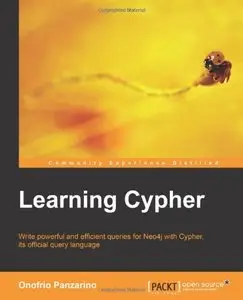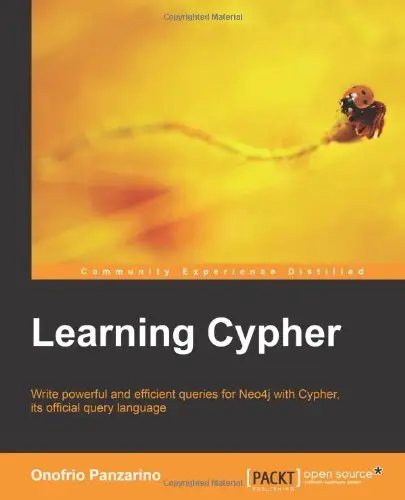Learning Cypher by Onofrio Panzarino
Packt Publishing - ebooks Account | May 14, 2014 | English | ISBN: 1783287756 | 162 pages | PDF, EPUB, MOBI, FB2 | 1 MB
Packt Publishing - ebooks Account | May 14, 2014 | English | ISBN: 1783287756 | 162 pages | PDF, EPUB, MOBI, FB2 | 1 MB
Write powerful and efficient queries for Neo4j with Cypher, its official query language with this book and ebook
Overview
Improve performance and robustness when you create, query, and maintain your graph database
Save time by writing powerful queries using pattern matching
Step-by-step instructions and practical examples to help you create a Neo4j graph database using Cypher
In Detail
Neo4j is generating much interest among NoSQL database users for its features, performance and scalability, and robustness. The software also provides users with a very natural and expressive graph model and ACID transactions with rollbacks. However, utilizing Neo4j in a real-world project can be difficult compared to a traditional relational database. Cypher fills this gap with SQL, providing a declarative syntax and the expressiveness of pattern matching. This relatively simple but powerful language allows you to focus on your domain instead of getting lost in database access. As you will learn in this book, very complicated database queries can easily be expressed through Cypher.
This book is a practical, hands-on guide to designing, implementing, and querying a Neo4j database quickly and painlessly. Through a number of practical examples, this book uncovers all the behaviors that will help you to take advantage of Neo4j effectively, with tips and tricks to help you along the way. The book starts with the basic clauses and patterns to perform read-only queries with Cypher. You will then learn about clauses and tips that can be used with patterns to elaborate results coming from pattern matching. Next, you will master the clauses required to modify a graph. Once you have got these basics right with the help of practical examples, you will then learn about tools and practices to improve the performance of queries and how to migrate a database to Neo4j from the ground up. To finish off, the book covers Cypher operators and functions in detail.



